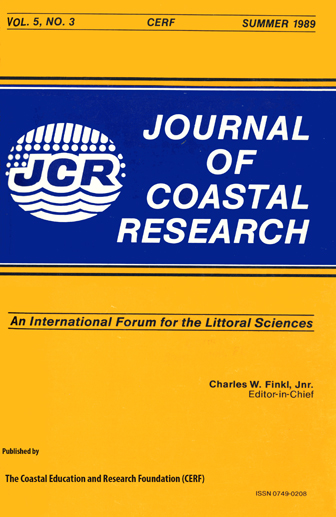The Movement and Stabilization of Beach Sand on Transverse Bars, Assateague Island, Virginia
Keywords:
Barrier Island, shoreface, longshore transport, sand bar, ripple marksAbstract
Transverse bars on the leeward beaches of Assateague Island were studied to understand the processes responsible for their development. It is thought that they originated by storm activity when sand was eroded from the berm and redeposited in the foreshore. On protected stretches of the beach, low-energy fairweather waves slowly return this sand to the berm by way of transverse bars. Incoming waves are refracted as they approach the coast, and sand moves shoreward in the channels between bars. Along the bar crests, sand also moves shoreward as a result of refraction around the bar and wave interference. Although connected to the upper shoreface, bars seem to be migrating parallel to the shoreline under the influence of slight longshore transport. On even quieter stretches of the beach, transverse bars have been colonized by salt cordgrass, which has effectively stabilized these bars. Cordgrass baffles the waves and binds the sand, thus helping to build the bars upward and retard their migration. With time, the grass stabilizes sediment of the intervening channels and may eventually overgrow the entire beach.


